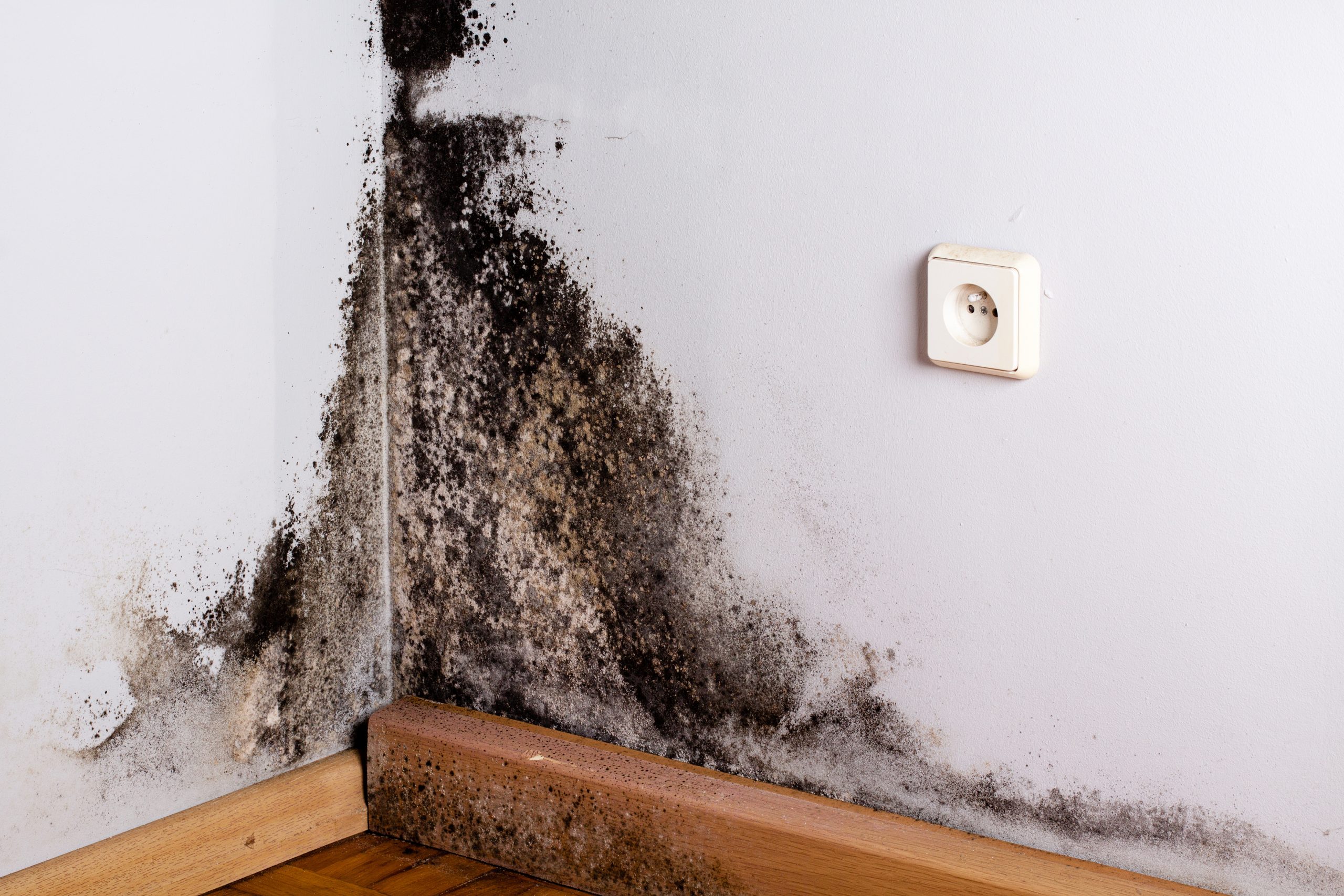Mold is a major issue for many houses and people. It has been related to respiratory difficulties in otherwise healthy people, according to the CDC, and it can cause damage to places where it is located. The EPA recommends that if you find mold, you act quickly because it can start causing these problems within 24 to 48 hours of taking hold.
This is especially important for vacation rentals, as you may endanger your guests’ health. Fortunately, there are numerous things you can take to help keep mold away.
What are the symptoms of mold in your vacation home?
Understanding the indicators of a mold outbreak is an important component of keeping it from spreading. Mold and mildew, unfortunately, do not show up in large numbers. Rather, it infiltrates your home and begins to live among your visitors. In the unfortunate event that hosts are too late and find a mold outbreak after the problem has spread throughout the house, the cost and energy required to eliminate the problem are substantially higher.
As a result, you must recognize the signs of mold in your vacation home before it’s too late. Mold and mildew problems can be identified in two ways: evidence around the house and negative effects reported by people. Mold symptoms may include:
- Unusually wet areas
- Wall and ceiling stains or gray discoloration
- A musty smell
- Furniture discoloration
- Peeling wallpaper
- Rotting wood
- Visible progress
Examine your vacation property to determine whether any of these symptoms are present, either inside or outside. Remember that mold isn’t just found in popular places like basements and under sinks. You should also inspect your home’s exterior and any areas where mold could be hiding without your notice.
How about the people? The reason hosts and homeowners are concerned about mold isn’t simply the harm it can cause to the home, but also the unpleasant effects it can have on guests. It is not only risky, but it can also put a stop to your vacation rental business. Having said that, below are some of the negative impacts of mold exposure:
- Breathing difficulties
- Skin irritation
- Asthmatic symptoms
- Eyes that are itchy and irritating
- Symptoms of the flu
- Fatigue
- Memory lapses
As you can see, mold exposure can have serious consequences for humans. Preventing and eradicating mold in your house will keep your guests safe and healthy.
Mold protection for your vacation rental
Before you start dashing to your property with bleach in hand, take a breather. There are techniques to prevent mold and mildew from growing on your vacation property in the first place. We’ve compiled a list of twelve measures to keep your home mold-free even after the worst rains.
1. Keep track of humidity levels
Mold thrives in moist, humid environments. You can help catch mold before it grows if you can monitor the humidity levels in your home. Mold begins to form when indoor humidity levels exceed 60%.
For ideal indoor conditions, keep your indoor levels between 30% and 50%. If you detect places that routinely rise beyond 60% humidity, you can take further efforts to prevent mold in those areas.
You should keep a watch on your attic, basement, and crawl spaces, as well as your bathrooms and other wet sections of the house.
2. Gutter cleaning and repair
Rain gutters play a crucial role in keeping your property dry and mold-free. Make sure they’re in good functioning order to keep water from backing up under your roof and triggering mold development in your attic.
Gutters should be cleaned at least twice a year. Many people know to clean them in the fall, but evergreen trees shed their needles all year and can be one of the most common causes of gutter clogs, so clean them twice a year and get them examined at the same time for the best results.
3. Begin with remediation.
If you already have mold, it will spread if it is not removed. While it is possible to clean a small area of mold on your own, once it has spread, you will need professional assistance.
Mold remediation is a process in which a professional company will come out and analyze the situation before advising you on the best course of action. This may include taking out mold-affected areas, washing mold off surfaces, and assisting in the prevention of mold spread.
You start with a clean slate if you begin your mold prevention approach with remediation. This can help prevent a more serious condition, such as mold growing in places you can’t see.
4. Put in a dehumidifier.
If you observe that you have regularly high humidity, installing or using a dehumidifier is one technique to reduce it and thereby reduce mold growth.
Dehumidifiers dry out the air by condensing and eliminating moisture, resulting in lower overall humidity levels.
If you find that you have higher than recommended humidity levels in one or more sections of your home, or if you’ve previously dealt with mold, a dehumidifier can help prevent its growth, even on a rainy day or when the humidity levels outdoors are high.
5. Put in a bathroom fan
Bathroom fans are designed to assist remove moisture from the air in this region, much as attic ventilation is designed to deal with the risk of moisture there.
A bathroom vent will extract the steamy, moisture-laden air from your bathroom and safely vent it outside your home. This is perfect for bathrooms that lack natural ventilation, such as a window, which can cause mold growth if they remain damp for lengthy periods.
A bathroom fan or vent can assist remove moisture from the air, allowing everything within to dry faster, including towels, tiles, and floors.
6. Increase attic ventilation
The humidity levels in your attic may be higher than those in the rest of your house. Warm air rises from the living space below and becomes trapped in the attic, where it condenses. This can cause mold and mildew to grow in your attic.
To avoid this, get the air flowing in the attic by adding sufficient ventilation, such as a ridge vent and attic fans to circulate the air. As air circulates naturally through the attic, it draws humidity with it, aiding in mold prevention.
7. Keep water out of your house.
Suppose your property is in a low-lying area, receives a lot of rain, or has had water infiltration in the past. In that case, you might consider investing in a system that can assist redirect groundwater away from your home.
French drains assist channel water away from your foundation, and sump pumps, which help remove water that has entered, can keep your basement or ground level floor dryer. This will assist to prevent mold formation, which is common after heavy rain.
8. Utilize mold-resistant materials.
Some materials support mold growth better than others. If you have trouble regions with a lot of mold growth, consider installing materials that can assist prevent mold growth, such as water-resistant wallboard.
Other primers can be applied to surfaces beneath the paint to prevent mold growth. If you’ve had mold in the past and want to avoid it happening again, this is a wonderful option.
You can use wallboard beneath tile in a shower or for basement walls, while porcelain flooring is a fantastic alternative for preventing mold growth on ground surfaces.
9. Use moisture-controlling house wrap or insulation.
When installing new siding, ensure that the house wrap or insulation material used on the building envelope is engineered for moisture management and allows water vapor to escape. This keeps mold from forming in the walls.
If the wrap or insulation is not built to handle moisture, it may trap water vapor inside your walls, causing condensation and subsequently mold growth.
If you live in a rainy location, a rain channel wrap can provide additional protection by keeping water out of your walls, where it can pool behind the siding.
10. Avoid carpets in mold-prone areas.
Carpets may be both a friend to mold and a foe to cleanliness. With its porous texture and numerous hiding spots, carpeting may hold and spread mold far more easily than other flooring options such as wood or tile. This isn’t to imply that doesn’t happen; for example, tiles can commonly be found in the caulk and between tiles.
Rugs, shags, and throws can bring elegance to a vacation rental, but they must be chosen properly. If you’re thinking about adding an area rug to your basement, ask yourself, “What will the upkeep look like?” or “Is my basement area too moist for a rug?” Remember that rugs with a higher pile are more likely to gather mold and mildew than carpets with a lower pile.
11. Include mold inspections on your vacation rental inspection checklist.
Thorough inspections are the best method to keep mold from spreading throughout your vacation property. There are a lot of mold-specific and effective inspection checkboxes that you can add. Switching out your air filters regularly, testing the functionality of your home’s dehumidifier, and performing a comprehensive scan of all surfaces will assist to keep mold and mildew at bay in your short-term rental.
12. Dispose of mold-prone products regularly.
Keep in mind that mold and mildew grow in moist environments. Disposing of mold-feeding goods aids in the prevention of future outbreaks. What products should be discarded or regarded as disposable? Here are a few examples:
- Sponges
- Loofahs for showering
- Towels for the hands
- Cutting boards made of wood
- Plants for the home
- Filters for air
Of course, mold is notorious for growing in many corners of the home, but these household objects are popular suspects for harboring mold and are an easy, preventive strategy for keeping your home mold-free. Depending on your home’s humidity and moisture levels, you may wish to discard some of these items, such as kitchen sponges, after each reservation or perform a fast check, such as the rims of your indoor plants, on a seasonal basis.
What should you do if you discover mold in your vacation rental?
Even the best preventive measures cannot always eliminate mold and mildew in the home. If you discover mold in your home, don’t worry just yet. Remember that your vacation property receives a high traffic level and occasionally carries some of the outdoors inside. Take a deep breath and follow these procedures if you find mold in your home.
Turn off the heating and cooling system.
If you have heat or air conditioning in your home, you should first turn it off. These systems routinely circulate air throughout the home, and if there are mold spores or mildew in these units, the problem will multiply exponentially. Turn off the HVAC system to prevent the mold from spreading further and to isolate the situation.
Reconsider your concerns.
Depending on the situation’s intensity, you may need to rearrange your reservations. The scenario isn’t ideal, but remember that safety always comes first. Your guests will be far more irritated if you keep their reservation while exposing them to a mold infestation than if you cancel the trip.
If you’re concerned that cancellations or rescheduling would harm your reputation, strive to be as honest and regretful about the situation as possible. Give them a free change or a discount on their next stay.
Prepare for a thorough cleaning.
To combat mold and mildew in your holiday rental, you must be aggressive. Not only must you clean the damaged region, but you must also clean the area around it to ensure that any invisible spores are eliminated. Because most mold remedies contain ammonia and bleach, be prepared to leave the house after cleaning the surface
Consider contacting a professional to remove mold if the afflicted area is too vast or is on a surface such as fabrics or hard-to-reach regions.
Keep mold from growing on your property.
Mold prevention can also help to avoid property damage and health issues. Mold prevention may need to be a multi-step undertaking in many circumstances, comprising more than one of these steps. Take the required precautions to safeguard your home from mold, and you can rest confident that you are avoiding some of the significant difficulties that mold can cause.
This is especially important for vacation rentals, as you may be endangering the health of your guests.









